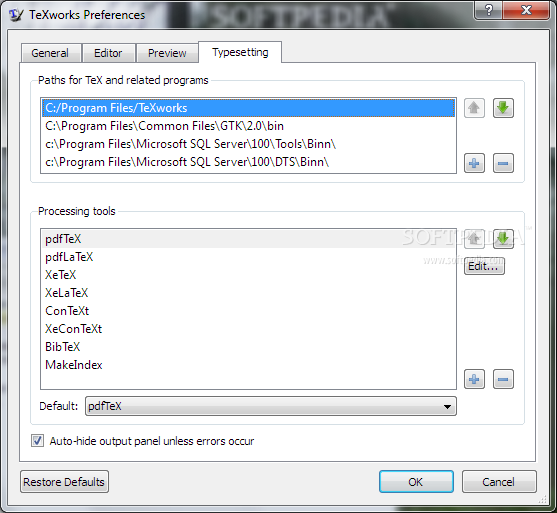
Latin-1 does not include curly quotes or em dash.
TEXWORKS WORD COUNT SOFTWARE
This is because their production and distribution software uses Latin-1 for the database.ī. At least in the USA, your print service may require that File Data be limited to characters in the Latin-1 set. When you create something in sandbox, then convert it to a raster image, those bad effects are neutralized. Why sandbox? Certain ordinary TeX commands and environments will disturb the novel page layout. These images can be placed as ordinary images in your main document.

Then you will obtain black/white or grayscale raster images, with surrounding white space trimmed away.
TEXWORKS WORD COUNT PDF
Post-process your sandbox PDF using novel-scripts. When not in draft mode, the sandbox pages will have empty headers and footers (no matter which style you use).į. If you also enable draft mode and shademargins, you can see the size of available space on the sandbox pages.Į. On a per-page basis, whatever fits in sandbox will also fit in your main document.ĭ.
TEXWORKS WORD COUNT FULL
Your sandbox document should have the same layout as your full document.


Instead, create one or more separate sandbox files.Ĭ. So, you cannot use sandbox for your whole book. The sandbox is limited to 4 pages of output, regardless of document length. Of course, you may have to load some additional packages.Īlso, when in sandbox mode, many glues and lengths are set to values that are typical of other document classes, rather than the special values ordinarily used by novel.ī. This will allow you to create tables and diagrams using nearly any methods ordinarily available in most other document classes. In sandbox mode, you can use many packages that would otherwise be prohibited. You may work in sandbox mode as a class option:Ī. Third, a great deal of contemporary fiction allows widows and orphans, when they are not distracting. Second, fiction often has numerous short paragraphs (especially with dialogue), and it is very difficult for software to deal with all of them. This choice was made for several reasons: First, attention to widows and orphans would reduce the effectiveness of the other, more important, layout penalties. If you wish to remove them, you must edit your text. You are likely to find widows and orphans on many pages. Word spacing, and even the spacing and characters within words, are controlled by moderate settings of the built-in microtype package.Ĭ. Widows and orphans are penalized very little. Novel applies a moderately strong penalty to hyphens they are allowed, but discouraged. When TeX processes a document on a paragraph-by-paragraph basis, it chooses the layout that has the least total "penalty." Penalties are assessed based on factors such as word spacing, hyphenation, widows, and orphans (clubs). No plus/minus "flexible glue." This is standard for printed fiction.ī. Search for any instances of special characters, particularly dollar and percent. To avoid unforeseen problems, you should review your document in a text editor, prior to compiling. If you must print a backslash, \string\ does it. Special characters, other than the backslash, are escaped by placing a backslash in front, thus: \$ for the dollar sign, \% for percent. Unless you carefully review the PDF, you might not notice that text is missing.į. But then, whatever text follows on that line will be missing from your PDF. The percent symbol normally produces no error, since it is a comment character. Incorrect use of the dollar sign may either place your text in math mode (not your intent) or produce a baffling error message that points to an innocent package.Į. In some cases, an incorrect usage will provide an error message that can be easily deciphered.ĭ. If you type them in a document, they will not appear as an ordinary printed character, but will do something else.


 0 kommentar(er)
0 kommentar(er)
